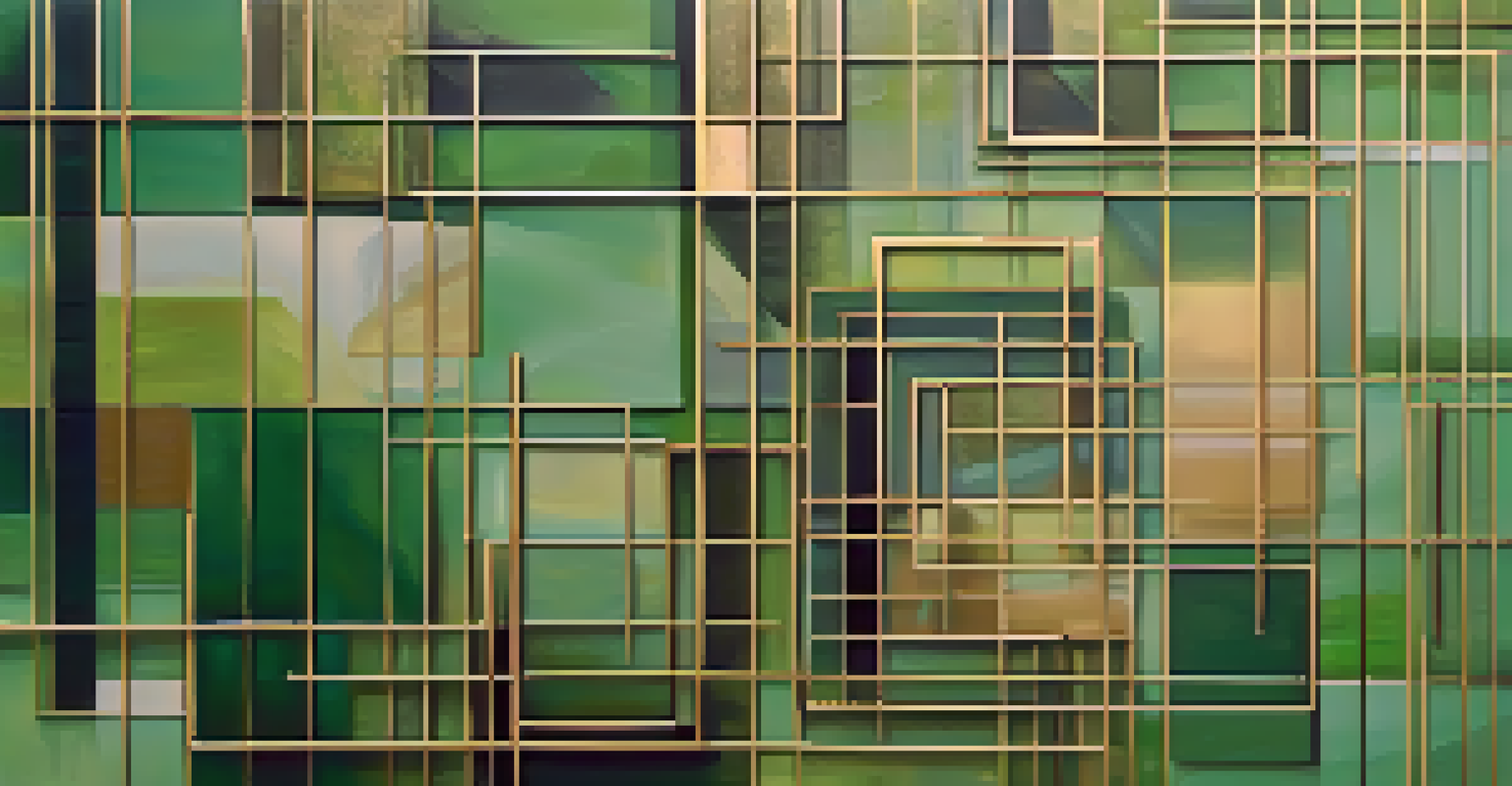Interpreting Abstract Art: A Guide to Non-Representational Meaning

What is Abstract Art? A Brief Overview
Abstract art is a genre that moves away from traditional representation. Instead of depicting objects or scenes from the real world, it focuses on colors, shapes, and forms. This can create a unique experience, as each viewer may interpret the work differently based on their personal perspective.
Art is not what you see, but what you make others see.
Think of abstract art as a language of feelings rather than a visual dictionary. Just like a piece of music can evoke emotions without a specific story, abstract art invites viewers to connect on an emotional level. It breaks the boundaries of conventional art, encouraging freedom of expression.
Understanding abstract art requires an open mind. Instead of searching for recognizable images, viewers should focus on their emotional reactions and thoughts that arise when they engage with the artwork.
The Role of Emotions in Abstract Art Interpretation
Emotions play a crucial role in interpreting abstract art. Each brushstroke, color choice, and shape can convey a multitude of feelings. For example, vibrant reds and yellows may evoke passion and energy, while cool blues can create a sense of calmness.

When viewers approach abstract pieces, they often rely on their emotional responses to guide their interpretation. Think of it as a personal dialogue between the viewer and the artist, where feelings take center stage. This connection can lead to a deeper understanding of the artwork's intent.
Abstract Art Invites Personal Emotion
Abstract art encourages viewers to connect with their feelings and personal experiences rather than focusing on recognizable imagery.
It's important to remember that there is no right or wrong way to feel about abstract art. Each person's emotional response is valid and adds to the richness of the art experience.
Key Elements to Consider When Viewing Abstract Art
When examining an abstract piece, consider the use of color, line, and form. Each of these elements can drastically influence your interpretation. For instance, a swirling line might suggest movement or chaos, while geometric shapes can convey order and stability.
Every artist dips his brush in his own soul, and paints his own nature into his pictures.
Additionally, the composition of the artwork plays a significant role in viewer perception. A balanced piece may invoke feelings of harmony, while an unbalanced one might create tension. Observing these elements can help unravel the layers of meaning embedded in the piece.
Finally, context matters. Knowing the artist's background or the historical period in which the artwork was created can enhance your understanding and appreciation of the piece.
Cultural Influences on Abstract Art Interpretation
Cultural background significantly influences how individuals interpret abstract art. Different cultures may have unique associations with colors, shapes, and symbols that impact their understanding. For example, in some cultures, white signifies purity, while in others, it may represent mourning.
This cultural lens can enrich the conversation around abstract art, as it introduces diverse perspectives. When viewers share their interpretations, they open up a dialogue that highlights the beauty of varied experiences and insights.
Cultural Background Shapes Interpretation
Cultural influences play a significant role in how individuals perceive and interpret abstract art, highlighting the beauty of diverse perspectives.
Being aware of these cultural influences can deepen your appreciation for the artwork and broaden your understanding of its potential meanings.
The Importance of Personal Experience in Art Interpretation
Personal experiences shape our perceptions of art, including abstract pieces. Your life journey, memories, and emotions will inform how you interact with a work of art. This unique lens can lead to a richer, more meaningful connection.
For instance, someone who has experienced loss may interpret a piece with darker hues differently than someone who views it purely for its aesthetic value. These personal narratives add depth to the interpretation process, making art a shared yet individual experience.
Therefore, embracing your personal history can enhance your engagement with abstract art, allowing you to uncover layers of meaning that resonate with you.
Tips for Engaging with Abstract Art
Engaging with abstract art can feel intimidating, but there are some simple tips to enhance your experience. Start by taking a moment to observe the piece without any distractions. Allow your eyes to wander and explore the colors and forms, letting your mind wander freely.
Next, ask yourself questions about your feelings: What emotions arise? What thoughts come to mind? This reflective practice can help you connect more deeply with the artwork.
Engagement Enhances Art Experience
Taking time to observe and reflect on abstract art can deepen one's understanding and enrich the overall experience.
Lastly, don’t hesitate to share your interpretations with others. Discussing your thoughts can lead to new insights and enrich your understanding of the piece.
Conclusion: Embracing the Journey of Interpretation
Interpreting abstract art is a journey filled with exploration and discovery. It invites viewers to step outside conventional boundaries and engage with their emotions and experiences. As you navigate this world of non-representational meaning, remember that each interpretation is valid.
Whether you find joy, confusion, or inspiration, these feelings are part of the artistic experience. Embrace the ambiguity and let it spark your creativity and curiosity.

Ultimately, abstract art encourages us to connect with ourselves and others in meaningful ways, making each interaction a personal and shared adventure.